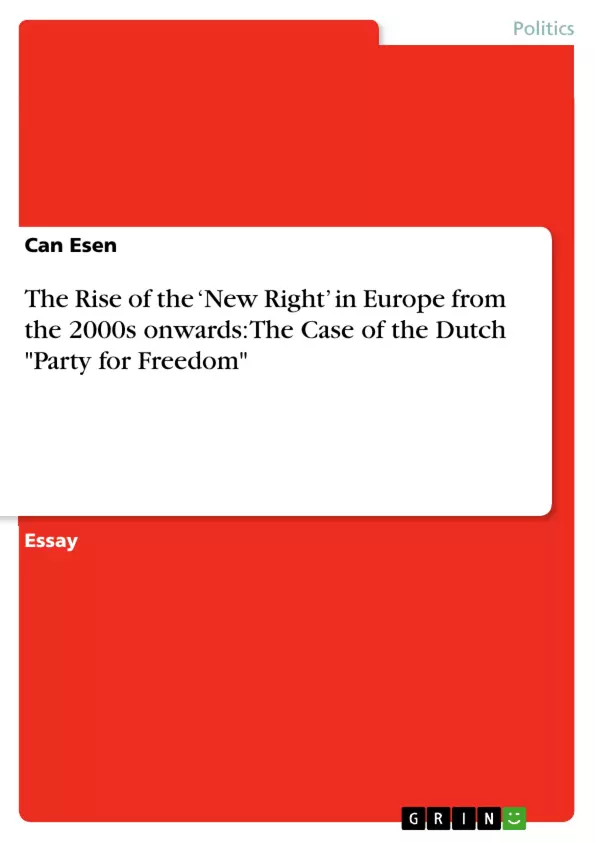From the beginning of the current century, many European countries have witnessed the resurgence of extreme right political ideologies in their social and political arenas. Political entities such as the Freedom Party of Austria, Swiss People’s Party, the Dutch Party for Freedom, the Hungarian Jobbik Party, the Swedish Democrats and the German National Democrat Party all share two or more of the following ideologies and characteristics: Euroscepticism, cultural conservatism, anti-globalism, national liberalism, anti-immigration, anti-Islamism, anti-Semitism and right-wing populism. Most of these parties gather under the umbrellas of several right wing formations, particularly as Non-Inscrits, in the European Parliament opposing the process of European integration. Their political success in the period after 2000, underlines the current trend towards right wing politics in Europe.
Inhaltsverzeichnis (Table of Contents)
- Introduction
- The Evolution of the ‘New Right’
- Recent Political Successes
- An Overview of the Extreme Right Parties in Dutch Political History
Zielsetzung und Themenschwerpunkte (Objectives and Key Themes)
This essay examines the rise of extreme right-wing ideologies and parties in Europe since the beginning of the 21st century, focusing on the case of the Dutch Party for Freedom. The essay aims to explain how and why these ideologies have gained prominence, as well as the factors contributing to their success in various European countries.
- The emergence and characteristics of the ‘New Right’ in Europe
- The recent success of extreme right-wing parties in European elections
- The role of globalization, economic challenges, and identity politics in the rise of the New Right
- The historical context and development of extreme right-wing parties in the Netherlands
- The case study of the Dutch Party for Freedom (PVV) and its impact on Dutch politics
Zusammenfassung der Kapitel (Chapter Summaries)
The first chapter provides an introduction to the study of the New Right in Europe, highlighting the emergence of extreme right-wing ideologies and parties in the 21st century. It outlines the key characteristics shared by these parties and the factors that have contributed to their resurgence in European politics.
The second chapter analyzes the evolution of the ‘New Right’ in Europe, exploring the distinctions between the ‘old’ and the ‘new’ extreme right movements. It examines the historical context, the key ideologies, and the socio-economic factors that have led to the rise of these parties in the post-industrial era.
The third chapter focuses on the recent successes of extreme right-wing parties in European elections, highlighting their electoral gains in countries like Austria, Denmark, Hungary, and the Netherlands. It discusses the reasons behind this success, including the global recession, immigration policies, and the perceived failure of mainstream political parties to address public concerns.
The fourth chapter provides an overview of the history of extreme right-wing parties in the Netherlands, tracing their development from the 1930s to the present day. It examines the emergence of parties like NSB, NVU, and CP, and their impact on Dutch politics. The chapter then delves into the case of the Dutch Party for Freedom (PVV), analyzing its rise to prominence and its impact on Dutch society.
Schlüsselwörter (Keywords)
The primary focus of this study is the emergence and success of the ‘New Right’ in Europe, particularly in the Netherlands. Key terms and concepts include extreme right-wing ideologies, euroscepticism, cultural conservatism, anti-globalism, national liberalism, anti-immigration, anti-Islamism, anti-Semitism, right-wing populism, globalization, identity crisis, economic challenges, immigration, and the Dutch Party for Freedom (PVV).
- Quote paper
- Can Esen (Author), 2011, The Rise of the ‘New Right’ in Europe from the 2000s onwards: The Case of the Dutch "Party for Freedom", Munich, GRIN Verlag, https://www.grin.com/document/193979



